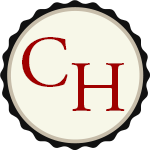Duotone Photoshop action
Duotone proofing station action
Usage
This simple action will create what Calvin Grier calls a ‘duotone proofing station’ from a Photoshop document. The action creates layer groups from the original image, one that will be the highlight color, and a second that will be the shadow color.
First, make sure the image mode is set to RGB, even if it starts out as a complete grayscale image. Then run the action from the Action pallet. The Action creates 3 major groups.
At the top of the stack is a copy of the original image. Visibility of this layer can be flipped on and off with the ‘eye’ activation button next to the layer. This is used to compare the tonal balance of the colorized image with the original.
The next two layers down the stack are the highlight and shadow layer groups.
In each of these layer groups is a layer at the very top of the stack that is used to determine the color for that particular part of the image. It has no color in it after the action is run, but to add a highlight color, use the color picker to create a color for this layer. Keep in mind that you will not have to reduce the color intensity for the highlight layer - this is handled automatically in the partitioning process.
Use the paint bucket tool to pour color into both the highlight and shadow color layer. Make sure the layer is active so that the color is applied to only that part of the image.
Flip the visibility of the ‘original’ layer off to preview what the duotone color split will look like.
The addition of the color will probably change the overall tonal appearance of the image slightly. You can adjust the points in the curve adjustment layer for each layer group to modify how the duotone will look.
Output
If you are using this action for creating two different plates for polymer photogravure, you will want to create two output files - one for the highlights and one for the shadows.
To create the image to use for printing the highlights, turn off visibility for the ‘Shadows’ group and the original. Also turn off visibility of the color layer in the highlights layer. Flatten the image and save this as ‘highlights’ or some other memorable name you can concoct. Use the history pallete after saving this and undo the flattening.
Next export the shadow image file as a separate image file in a similar way by turning off visibility of the highlights, the shadow color, and the original layer. As before, flatten the image and save it with a memorable name.
The same process can be used if you want to output the two layers as negatives, but you should invert them before saving if you are not using the negative printing switch in QTR Print Tool.
Installation
Download the necessary files here.
To install this action, open the Actions pallet and click the hamburger menu on the upper right, and select ‘Load Actions’ from the menu and then navigate to the location where you have unzipped this file and select the photogravure-actions.atn file and load the action set. Note: this action set also includes a few other simple actions for creating image files that can be printed as negatives to make relief plates. These just save a few menu clicks if you want to convert an image to a bitmap.
Next, you need to copy the duotone-highlights.acv and the duotone-shadows.acv files to the /Applications/Adobe Photoshop 2025/Presets/Curves folder. Finally, copy the duotone-highlights.alv file to your user library in the ~/Library/Application Support/Adobe/Adobe Photoshop 2025/Presets/Levels folder. You will probably have to supply an administrator password to do some of these copy operations. These instructions work for Macintosh computers. I don’t use Photoshop on Windows, but hopefully if you are advanced enough to want to create duotones you can figure out the comparable file locations on a Windows box.
Once all these are copied, you can run this action from the Actions pallet.
